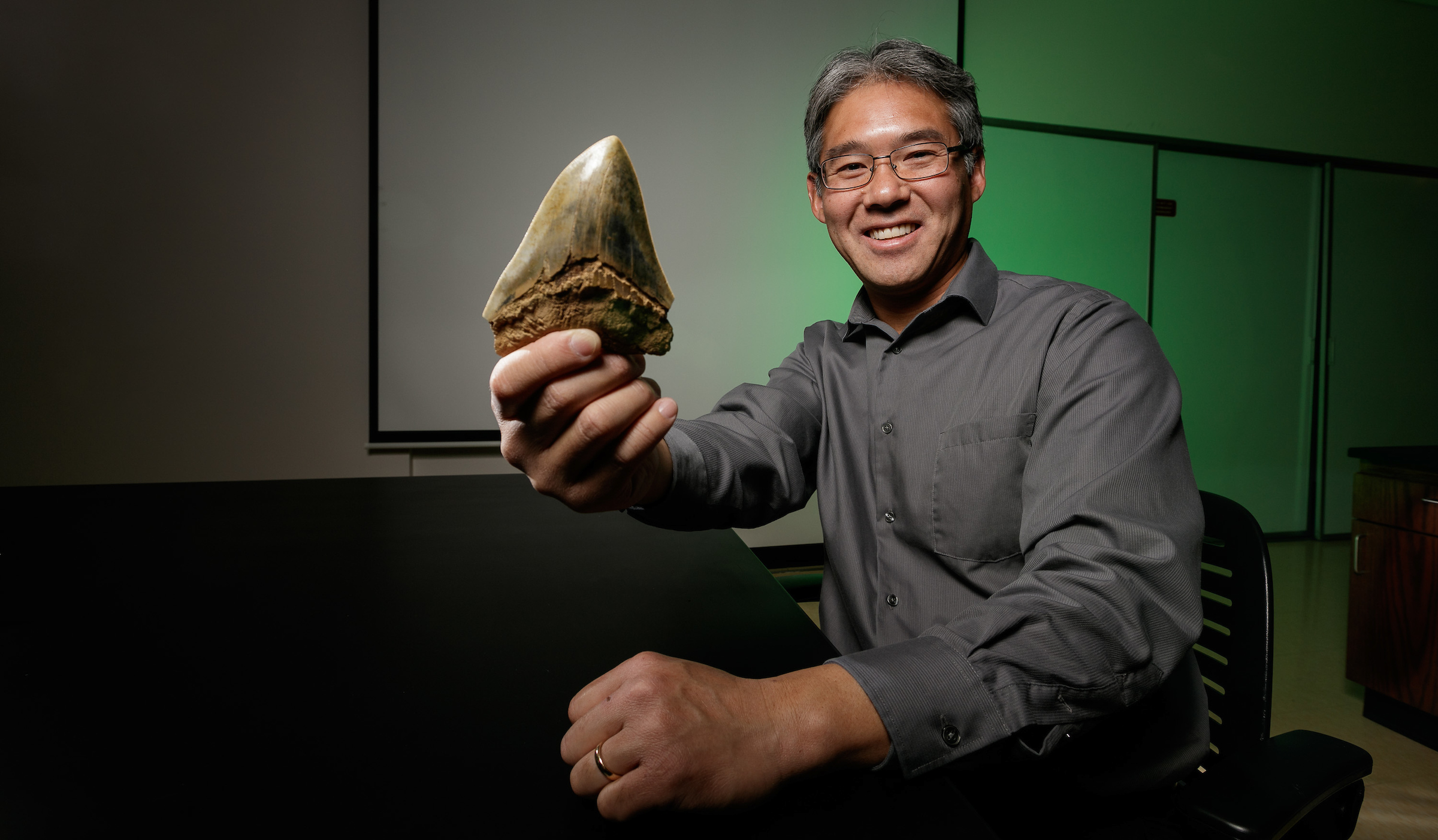Otodus megalodon is commonly portrayed as a super-sized, monstrous shark, in novels and films such as the 2018 sci-fi thriller “The Meg,” but it is known that the scientifically justifiable maximum possible body size for the species is about 50 feet at present (15 meters; not 16 meters or larger in some previous studies). Nonetheless, it is still an impressively large shark, and the new study illuminates exactly how uniquely gigantic the shark was relative to other sharks, noted Kenshu Shimada, a paleobiologist at DePaul University in Chicago and lead author of the study.
Otodus megalodon belongs to the shark group called lamniforms with a rich fossil record, but the biology of extinct forms is poorly understood because these cartilaginous fishes are mostly known only from their teeth. The study used measurements taken from specimens of all 13 species of present-day macrophagous (non-planktivorous) lamniforms to generate functions that would allow estimations of body, jaw and dentition lengths of extinct macrophagous lamniforms from their teeth. These quantitative functions enabled the researchers to examine the body size distribution of all known macrophagous lamniform genera over geologic time.
The study demonstrates that O. megalodon reaching at least 46 feet (14.1 meters) is truly an outlier because practically all other macrophagous sharks, including extinct forms, have a general size limit of 23 feet (7 meters); and only a few plankton-eating sharks, such as the whale shark and basking shark, were equivalent or came close to the size. The study also reveals that the Cenozoic Era (after the age of dinosaurs, including today) saw more lamniform lineages attaining larger sizes than the Mesozoic Era (age of dinosaurs).
Warm-bloodedness has previously been proposed to have led to the gigantism (20 feet, or over 6 meters) in multiple lamniform lineages. The new study proposes their live-bearing reproductive strategy with a unique cannibalistic egg-eating behavior to nourish early-hatched embryos to large sizes inside their mother to be another possible cause for the frequent evolution of gigantism achieved by lamniform sharks.
Understanding body sizes of extinct organisms is important in the context of ecology and evolution. “Lamniform sharks have represented major carnivores in oceans since the age of dinosaurs, so it is reasonable to assert that they must have played an important role in shaping the marine ecosystems we know today,” said Shimada.
“This is compelling evidence for the truly exceptional size of megalodon,” noted co-author Michael Griffiths, a professor of environmental science at William Paterson University in Wayne, New Jersey. Co-author Martin Becker, also a professor of environmental science at William Paterson University, added, “This work represents a critical advancement in our understanding of the evolution of this ocean giant.”
The new study, “Body, jaw, and dentition lengths of macrophagous lamniform sharks, and body size evolution in Lamniformes with special reference to ‘off-the-scale’ gigantism of the megatooth shark, Otodus megalodon,” will appear in the forthcoming issue of Historical Biology and is available online at https://doi.org/10.1080/08912963.2020.1812598.
###


